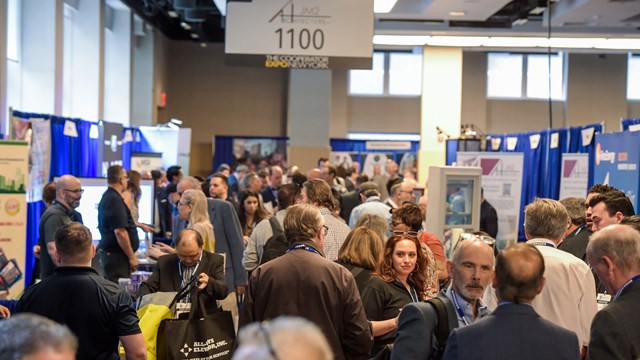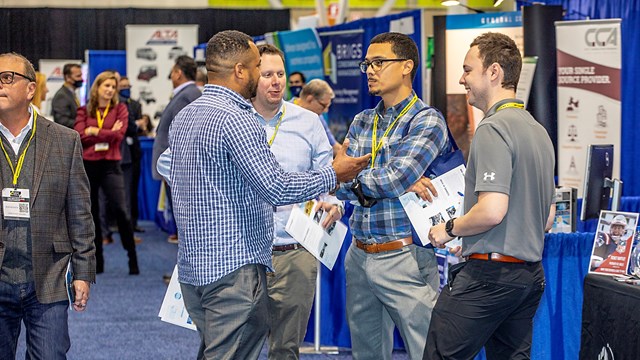When it comes to offering social programs and amenities, respective requests, needs, and preferences can run the gamut. For board members and managers, having programs in place that cater to collective populations—toddlers to octogenarians and all those in between (and beyond)— can be a quite a challenge.
“A community that has activities and opportunities to get together creates a much stronger sense of belonging and a much more positive atmosphere,” says Attorney Ellen Hirsch de Haan, who practices in Florida and has over 28 years of experience in the practice of HOA and condo law. “They have fewer disagreements, less challenges with the board, and more cooperation with the operations and governance of the community.”
A 2010 recipient of the Community Associations Institute Award by the National Board of Certification for Community Association Managers, de Haan has penned three books about the subject including Boomer Shock: Preparing Communities for the Retirement Generation, Self-Management: A Guide for the Small Community Association, and A Place to Age. Earlier this year, she served as featured presenter at Community Associations Institute Community Association Law Seminar in San Francisco.
“You find that, across the country—depending on where you are—you are going to have a different type of culture, and possibly a totally different demographic mix,” says de Haan. “Housing stock matters; geographic location matters, and cultural and demographic backgrounds, and—of course—age matters.”
Typically, a wide range of residents populate condos and co-ops; therefore, board members, social committees, and managers have to work in a collaborative fashion to ensure all residential requests are considered. Most likely, a young married couple raising children, for instance, will have different need—like playrooms and day care services—than a retired couple who may prefer game nights and visits to museums.
“Social programming in a multi-family community can come about in a variety of ways,” says Cynthia Graffeo, director of client relations for Argo Real Estate, a property management company that serves the tri-state area. “We have seen everything from residents volunteering to start a social initiative to board members suggesting to management that a committee be formed.”
Communication is King
For most properties, technology has had an impact on certain aspects of this subject. For instance, in recent years, the once customary place to share news and information—the bulletin board—has morphed to a more virtual experience. While older residents still prefer cork boards and pinned flyers, this method of communication is disappearing.
Many boards and property managers use websites—such as BuildingLink—to communicate, which serves 984,510 residents, 46,623 property managers and staff in 2,615 buildings worldwide and serves as a paperless portal for news, information, and community chatter.
“Property managers, and=r social committees can poll residents via-email or by posting to the building’s bulletin boards, the building’s website or online services that the building may subscribe to,” adds Graffeo.
However, certain associations are considered troglodytes, or not ready (or willing) to adopt new communication practices. “Many associations are very slow to embrace new technologies,” says de Haan. “Many will use e-mail, but I can’t even get my clients to Skype…and this isn’t a new technology. I’m either on conference calls with them or visiting them in person.”
According to experts the best communication takes places during scheduled meetings in which residents, board members, and managers interact in person.
“There are surveys and the occasional town hall meeting so you can get various inputs from the people in the community—a sense of a community the more you are interacting,” says de Haan. “It’s an educational process, particularly as we get more intergenerational residents.”
For teens, single adults, and families, classes like Zumba, Pilates, kickboxing, spinning, sculpting, high intensity interval training and yoga are becoming popular. “The older baby boomers are very big into book clubs, travel clubs, poker games, bridge games, shuffleboard, bocce, and tennis courts. Younger boomMatt Jarmel, a principal with Jarmel Kizel Architects & Engineers, based in Livingers look for fitness centers and pools and clubhouses for functions like a movie night or special events like the Super Bowl,” says de Haan. “For families, they are n0=usually far more interested in having a playground built than a Super Bowl party.”
“A lot of the older adults like aqua-cise if there is a pool, senior yoga, chair yoga which is less strenuous,” says Jude Odenthal, a property manager with the Whippany-based company Taylor Property Management. “The kids like kids yoga, tumbling tots, an early introduction into movement skills through classes like gymnastics. A big thing for kids is always swimming. They love swim classes, mommy and me swim classes are especially popular.”
Graffeo explains that Argo-managed buildings also cater to various age groups. For older adults, programs can run the spectrum from resident walking clubs to gardening clubs, knitting clubs to book clubs and Tai chi. “Walking, Tai chi, and yoga/aqua yoga are great because it is low impact and can help develop balance, range of motion and strength,” she says. “For little kids, buildings with playrooms are popular. Playrooms can have soft flooring, age appropriate toys and games and even little tricycles for young children.”
The Bottom Line
While the majority of properties managed have a budget line for social activities, depending on the property, a budget can range from an annual holiday party to numerous parties and social outings such as museums and the like.
For retirement communities, recreational budgets can become a sticky issue. To this end, each will take a different approach to how they budget. In some cases, it may be a combination of allocated money from the board along with fellow residents banding together to create shared experiences.
“If it’s a retirement community, you may have a lot of people on fixed incomes,” says de Haan. “Older people don’t like to pay into reserves because they feel they might not be around to use the funds, so they want to pay less money each month. Younger people just starting out with families don’t have as much income or extra money to spend, so between these two variables, budgets are always an issue.”
In some cases de Haan says that associations will charge a fee for the event via a ticketing process. Often, this will cover the cost of food and soft drinks; this way, the board doesn’t have to allocate funds. “The cost for many of these events is reasonable, and sometimes it’s a potluck event,” says de Haan. “If, at the end of the year, the board had extra money, they might be able to afford to host a holiday party.”
“For communities with modest budgets you can get residents to volunteer their time to have a group exercise class or have people come together for movie nights,” adds Odenthal. “That’s all low-cost options that could add value to the facility.”
Creating Meaningful Experiences
While most communities can expect a holiday party, and perhaps a summer barbecue each year, as units change hands and residents get older, needs and wants also change. As a result, if a yoga program worked two years ago, it may not work two years later. As boards, managers, and social committees determine residential needs, they have to continually adapt to changing circumstances. In many cases, this requires creative thinking.
As de Haan points out, with communication and shared willingness to affect change, residents can and do come together to make their community different. While these are positive experiences, new board members and younger managing agents also have to keep a mindful eye on any liabilities that can result from an activity—whether a physical activity like landscaping or a social gathering such as a party.
According to experts, most often, the majority of communities with social activities are a joint effort shared between a social committee and a manager. Where liability plays a significant role is when residents’ age impacts mobility and participation. As a result, de Haan sees the role of the association manager changing in many cases as they are not educated to meet the demands or responsibilities of an aging community.
“Community association managers are being called upon to deal with things that they do not have the expertise for unless they have a masters or PhD in social work or psychiatry. New forms of education will be needed for managers,” says de Haan. “There are liability issues as well with aging. The association is not a hospital or an assisted living facility, and many managers are called upon to deal with some extremely difficult situations.”
“Recreational programming and activities helps the condo association as far as getting the residents to interact with the other which leads to a more positive vibe and sense of community with all of the residents,” says Odenthal. “That leads to less hostilities, which is a positive thing.”
W.B. King is a freelance writer and a frequent contributor to The New Jersey Cooperator. Staff writer Christy Smith-Sloman contributed to this article.






Leave a Comment